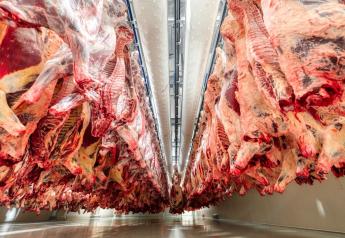Tuberculosis in Cattle: What You Need to Know

Bovine tuberculosis is a chronic and slowly progressive disease of cattle that emerges periodically in the US, as it has with a recent discovery in a Harding County, South Dakota, cattle herd. Its incubation time ranges from months to years. Most often, infected cattle will show little to no outward signs of infection. When clinical signs are present, they will often be vague, such as weight loss, depression, and sluggishness. Transmission of tuberculosis between animals occurs when susceptible animals are in close contact with respiratory secretions or aerosols from infected animals. Close contact is necessary for transmission; the infection is not considered to spread easily between cattle separated by any distance.
Identification & Diagnosis
Cases of bovine tuberculosis are usually diagnosed on the basis of tell-tale abnormalities found on slaughter inspection. Tuberculosis in live cattle is identified using the caudal fold test (CFT), where a small dose of tuberculin is injected into the skin around the tail. When infected animals are identified, state and federal officials trace them back to their herd of origin and work to identify other infected herds.
There are three distinct strains of bacteria that cause tuberculosis in animals and people:
- Mycobacterium bovis: Affects cattle and many other species, including people and wildlife.
- Mycobacterium avium: Affects mostly poultry, but can cross-infect cattle.
- Mycobacterium tuberculosis: Affects humans only. Every year, there are cases of human tuberculosis reported in South Dakota (an average of 14 cases per year from 2007-2016).
Public Health Concerns
Bovine tuberculosis may be considered a public health concern, since it can be transmitted to people. However, people would have to be in very close contact with infectious animals in order for transmission to occur. The general public is protected from bovine tuberculosis by the federal and state meat inspection system identifying TB in slaughtered animals. Cooking and pasteurization will kill M. bovis in meat and milk.
Transmission
M. bovis can be transmitted to wildlife, such as deer. As with people and cattle, close contact is necessary for transmission. In Michigan, white-tailed deer are considered to be significant in the epidemiology and persistence of tuberculosis. Hunters at all times have been encouraged to look for abscesses or other suspicious lesions and report unusual findings to the SD Game, Fish, & Parks Department.
For more details about tuberculosis, refer to the South Dakota Animal Industry Board.







